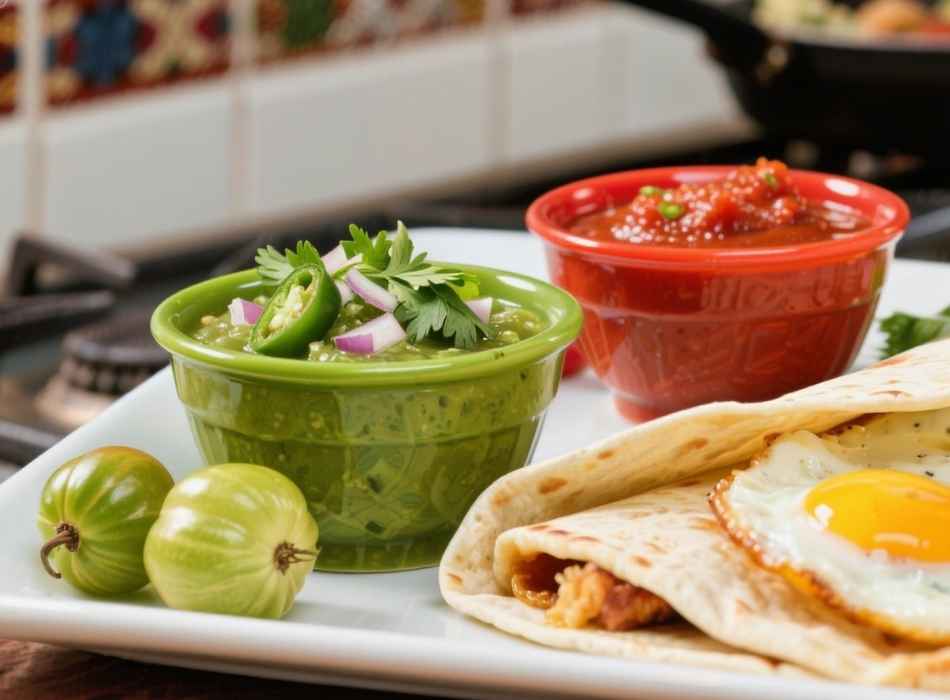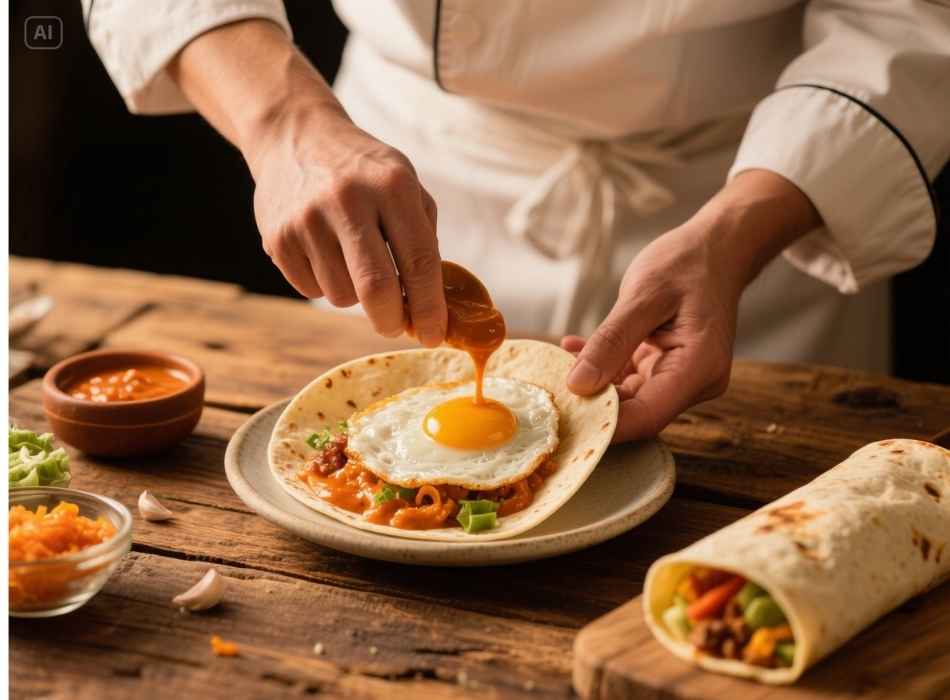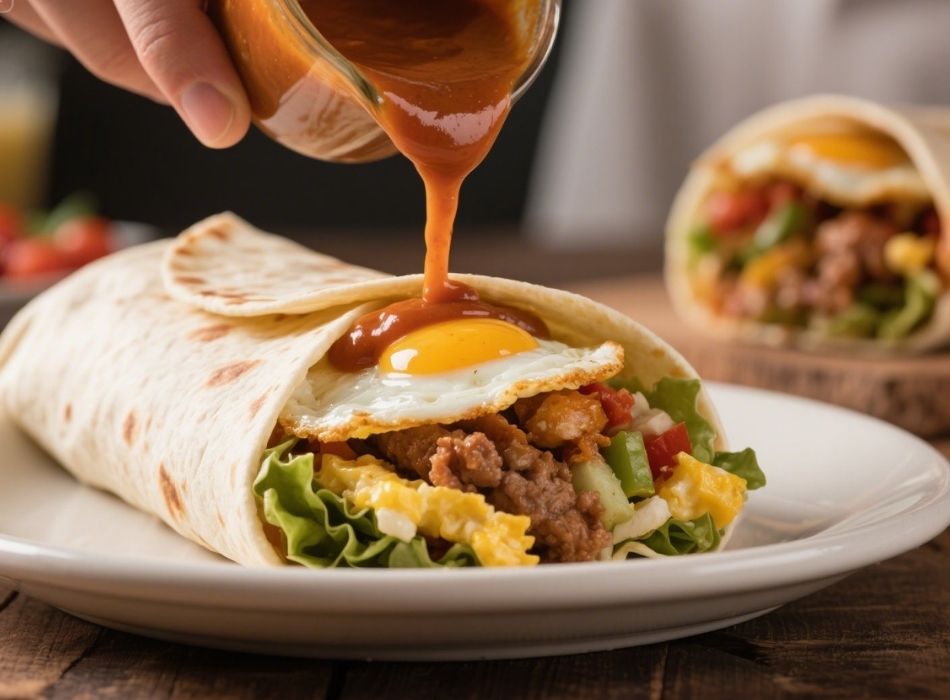The breakfast burrito represents a fascinating intersection of Mexican culinary tradition and American innovation, yet its success hinges entirely on one often-overlooked component: the sauce. While most discourse surrounding breakfast burritos focuses on filling combinations or tortilla preparation techniques, the sauce serves as the unifying element that transforms disparate ingredients into a cohesive culinary experience.
The sauce functions as both a flavor enhancer and a textural mediator, bridging the gap between dry components like scrambled eggs and potatoes while amplifying the overall taste profile. Understanding the principles behind effective breakfast burrito sauce construction requires examining both traditional Mexican salsas and contemporary American adaptations, along with the biochemical interactions that occur during preparation and consumption.
Traditional Foundations: Salsa Verde and Roja

Classical breakfast burrito sauces derive from two primary Mexican traditions: salsa verde and salsa roja. Salsa verde, constructed from tomatillos, jalapeños, cilantro, and onions, provides the acidic brightness necessary to cut through rich breakfast proteins and dairy components. The tomatillo’s natural pectin content creates an ideal viscosity that adheres to ingredients without overwhelming them.
Salsa roja, conversely, employs tomatoes as its base, often incorporating chipotle or guajillo chiles for complexity. The Maillard reactions occurring during the roasting process of these chiles contribute to umami compounds that complement the savory breakfast elements exceptionally well. Research in food science demonstrates that these compounds enhance palatability through their interaction with glutamate receptors.
Contemporary Innovations: Crema-Based Systems

Modern breakfast burrito preparation has embraced crema-based sauce systems that incorporate Mexican crema or American sour cream as foundational elements. These dairy-based sauces provide several advantages: they moderate heat levels from chiles, add richness that complements lean proteins, and create a cooling contrast to warm burrito contents.
The most sophisticated variations combine crema with lime juice, creating an emulsion that maintains stability while providing both tang and richness. Advanced practitioners incorporate herbs like cilantro or chives, along with garlic compounds that have been shown to enhance flavor perception through their sulfur-based aromatics.
Heat Management and Chile Selection

Effective breakfast burrito sauce construction requires careful consideration of capsaicin levels and their distribution. Unlike dinner applications where intense heat might be desirable, breakfast contexts demand more nuanced approaches. Jalapeños provide moderate heat with fresh, vegetal notes, while serranos offer increased intensity without overwhelming morning palates.
For those seeking minimal heat with maximum flavor, poblano chiles offer the ideal solution. Their thick walls contain fewer capsaicin-producing seeds while contributing complex, earthy flavors that complement egg-based dishes exceptionally well. Roasting poblanos before incorporation amplifies their natural sweetness through caramelization processes.
Texture Considerations and Consistency Control

Professional breakfast burrito preparation demands precise attention to sauce consistency. Overly liquid sauces create structural problems, causing tortillas to become soggy and compromising the burrito’s integrity. Conversely, thick sauces fail to distribute evenly, creating pockets of intense flavor alongside bland areas.
The optimal consistency resembles heavy cream—fluid enough to coat ingredients uniformly yet substantial enough to maintain position within the burrito structure. Achieving this requires understanding the role of emulsifiers and thickening agents, whether through natural pectin in tomatillos or deliberate additions like cornstarch slurries.
Flavor Layering and Umami Enhancement

Sophisticated breakfast burrito sauces employ layered flavor construction, incorporating multiple taste elements that reveal themselves sequentially during consumption. Initial brightness from citrus acids gives way to deeper chile flavors, followed by herbaceous notes from cilantro or oregano.
Umami enhancement proves particularly effective in breakfast applications. Worcestershire sauce, fish sauce, or aged cheese additions provide glutamate compounds that amplify savory elements without announcing their presence. These additions require careful measurement—typically no more than half a teaspoon per cup of sauce—to avoid overwhelming the preparation.
Regional Variations and Cultural Adaptations

Breakfast burrito sauce traditions vary significantly across different regions, reflecting local ingredient availability and cultural preferences. California-style preparations often incorporate avocado-based elements, creating verde-adjacent sauces with increased richness and a distinctly different mouthfeel.
Texas variations frequently emphasize tomato-based red sauces with increased heat levels, often incorporating habanero or cayenne elements. These preparations reflect the region’s preference for assertive flavors that can compete with heartier breakfast meat selections like chorizo or bacon.
New Mexican approaches, arguably the most sophisticated, employ complex chile combinations that might include Hatch chiles, creating sauces with remarkable depth and regional specificity that transform the breakfast burrito from convenience food into a cultural expression.
Mastering Your Breakfast Burrito Sauce Craft

Breakfast burrito sauce construction represents far more than mere condiment preparation—it embodies an understanding of flavor chemistry, cultural tradition, and culinary technique. The most successful practitioners recognize that sauce serves as the unifying element that elevates individual components into something greater than their sum.
Whether pursuing traditional Mexican approaches or exploring contemporary innovations, focus on balance, consistency, and purposeful ingredient selection. Consider your sauce not as an afterthought but as the crucial element that defines your breakfast burrito’s success. The difference between adequate and exceptional breakfast burritos invariably lies in the sophistication of their sauce construction.



















